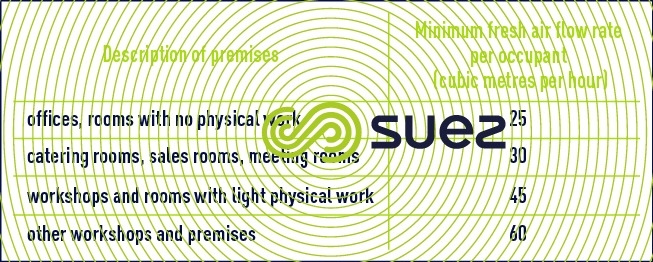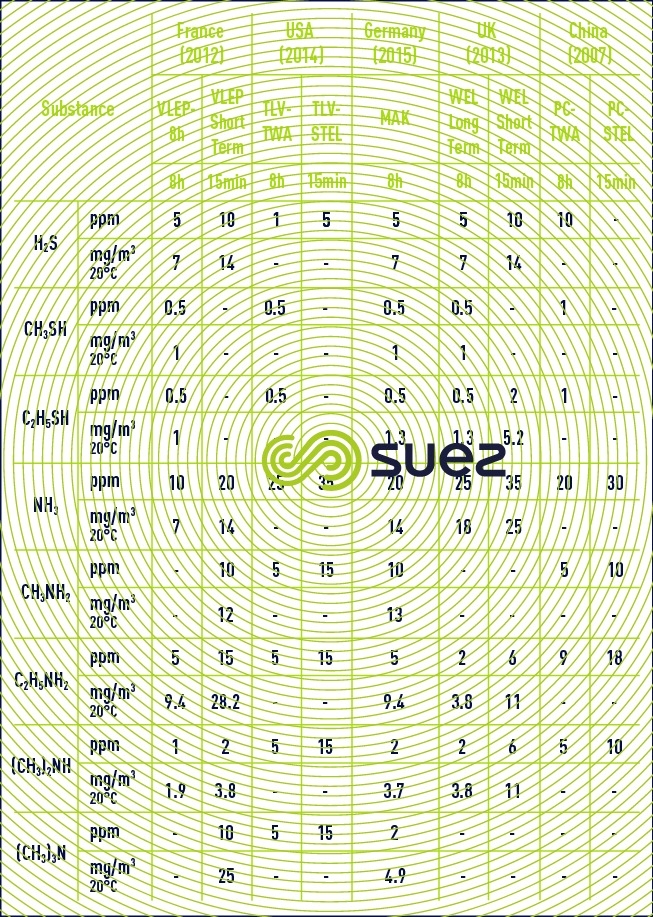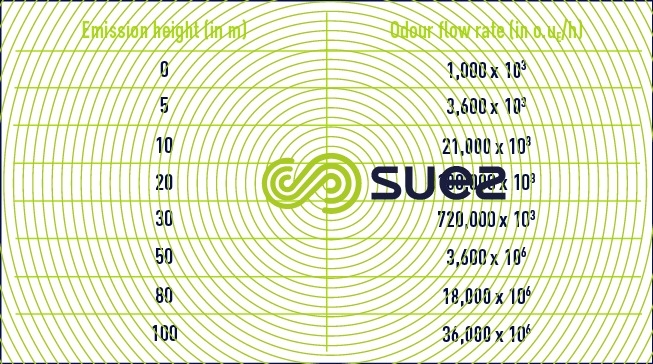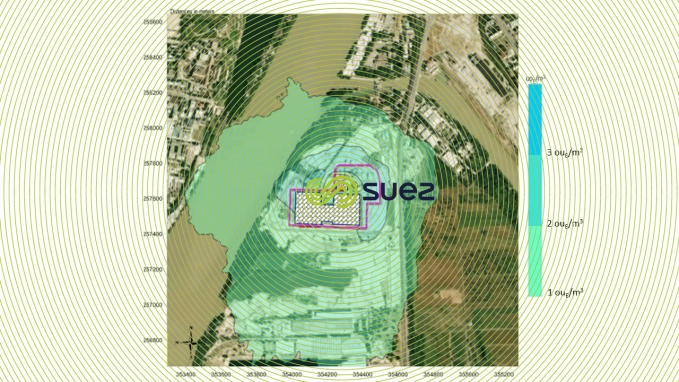regulations
Reading time:ventilation of premises
The air must be renewed in process premises to:
- maintain an appropriate air quality to protect the health of workers and the equipments;
- avoid high temperatures, unpleasant odours and condensation.
In France, the Labour Code distinguishes between:
- premises with non-specific pollution, where pollution relates solely to human presence, except for sanitary spaces;
- premises with specific pollution; these are premises where pollutants, other than those relating solely to human presence, are emitted as gases, vapours and solid or liquid aerosols, premises that may contain sources of potentially pathogenic micro-organisms and sanitary spaces.
This distinction is occasionally found in other countries’ regulations, mainly in some US States.
Regulations on ventilation in workspaces in most countries is based on maximum pollutant concentrations in the ambient air and fresh air flow rates to be guaranteed based on the number of occupants (UK, Hong Kong, Quebec).
Our design criteria for workspace ventilation in water treatment plants are based on French regulations and are adapted, on a case-by-case basis, to the regulatory constraints specific to each country.
premises with non-specific pollution
In premises with non-specific pollution, French regulationn requires ventilation either by :
- mechanical means with minimum blown fresh air flow rates that are mandatory (table below);
- or by natural means provided that occupants can access external openings.



The international minimum fresh air flow rates required per occupant are normally around 30 m3/h.
premises with specific pollution
In premises with specific pollution, where hazardous or unpleasant substances are emitted as gases, vapours and solid or liquid aerosols, compliance with the occupational exposure limit (OEL) values is essential:
- short-term exposure limit (STEL) values that relate to the pollutant concentration limits to which an employee can be exposed on average over fifteen minutes. Compliance with this limit prevents the risk of immediate or short-term toxic effects due to exposure peaks;
- limit values over eight hours (8-hour OEL) that relate to the pollutant concentration limit to which an employee can be exposed on average for the duration of an eight-hour shift. These values are intended to protect workers from long-term effects. The eight-hour limit value can be exceeded for short periods providing the short-term limit value is not exceeded, when it exists.
Limit values are expressed as volume (ppm or parts per million), as weight per volume (mg·m–3) or as percentage per volume, knowing that:


Many substances are subject to limit values. These limit values will be statutory requirements for some substances. For others, they are provided for guidance. These values are published by decree in France and revised regularly. The European Commission also defines limit values for certain pollutants.
Table 4 quotes French eight-hour OEL and short-term STEL (15 minutes) limit values and compares them with the equivalent regulatory values in the USA, Germany, United Kingdom and China.



A technical control of compliance with the occupational exposure limit value must be made for the stringent or indicative pollutants in question by an accredited body at least once a year and should the exposure conditions change.
These bodies are independent from companies subject to these technical controls and are accredited for the establishment of the measuring strategy, samplings and analyses.
In France, the atmospheric control results are recorded in a national database (SCOLA base). They can thus be statistical analysis by the public authorities.
regulation on odours
International regulations on odours are normally based on two complementary approaches:
- regulations at source by emission limit values;
- regulations of the olfactory impact by air quality limit values in the emitting site's surroundings (or immission regulations).
At source, the odours and odorous gaseous pollutants emitted are normally regulated by emission limit values, expressed sometimes as flow and sometimes as concentration.
In France, for the Installations (facilities) Classified for Environmental Protection (ICPE) and in China in general, the odour emission limit values from a channelled source are fixed according to the height of the discharge. The table below presents the French regulation values for installations classified for environmental protection.



In the environment (at immission), the main regulations found worldwide to limit the olfactory impact of an odour-emitting site set a percentile of odour concentration in the ambient air outside the plant’s boundaries.
For example, French regulations have imposed the compliance limit of 5 ouE/m3 at percentile 98 in the environment for any rendering and composting activities. In other countries, like Northern European countries, these values can be more restrictive, with constraints of 1 ouE/m3 at percentile 99 for some activities.
To check that the olfactory impact of an facilities complies with the regulatory criteria expressed in percentile of odour concentration, an atmospheric dispersion study must be conducted of at least three meteorological data years. A sample map representing percentile 98 of hourly odour concentrations is given in the figure below.



Moreover, it has been noted that it is also a tendency for international regulations to define different odour concentration thresholds in the environment, depending on whether or not the odours emitted are pleasant in nature and the sensitivity of the area potentially impacted by the odours.
Bookmark tool
Click on the bookmark tool, highlight the last read paragraph to continue your reading later












